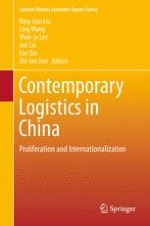This book carries on the ideal of providing a systematic exposition of the logistics development in China to the English-reading community at large in the spirit of the four predecessor volumes, published in previous years. This book is the fifth volume in a series entitled "Contemporary Logistics in China", authored by the researchers in Logistics Center at Nankai University. Specially, the opening chapter of this book presents a synopsis of the intent, the history, the framework, the topical coverage and the train of thought of the sequel in the latest five years. As the previous four volumes, our ultimate aim and desire is to present a timely portrayal of the rapid pace of growth of China’s logistics market and the status of its logistics industry’s evolution.
